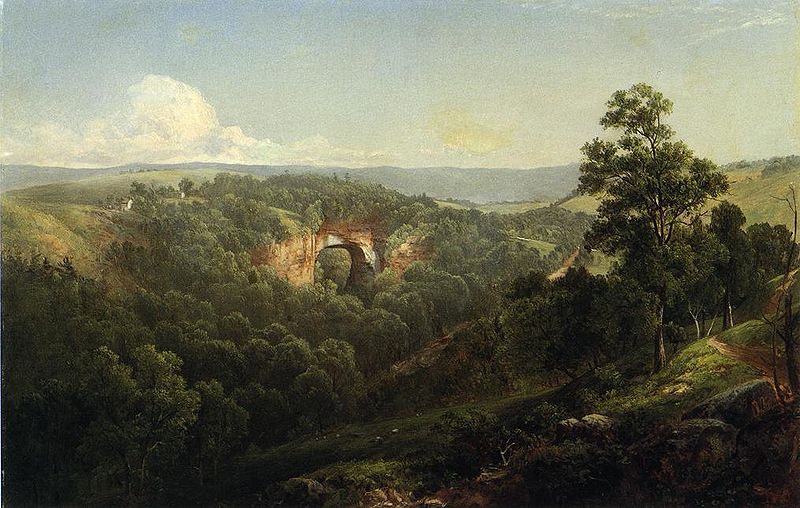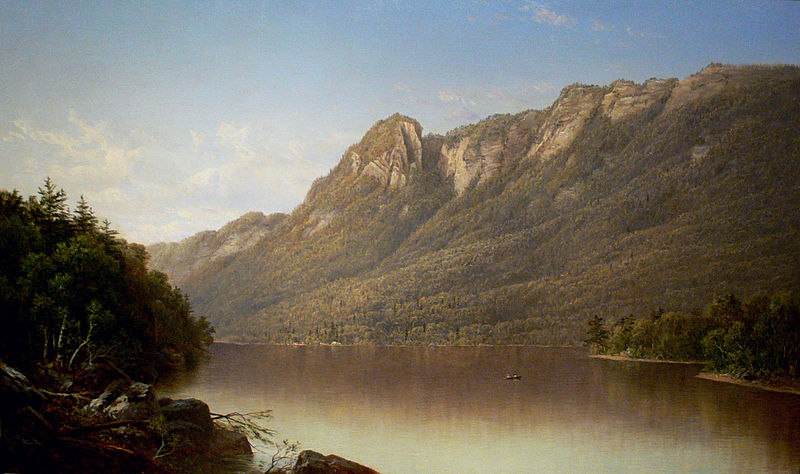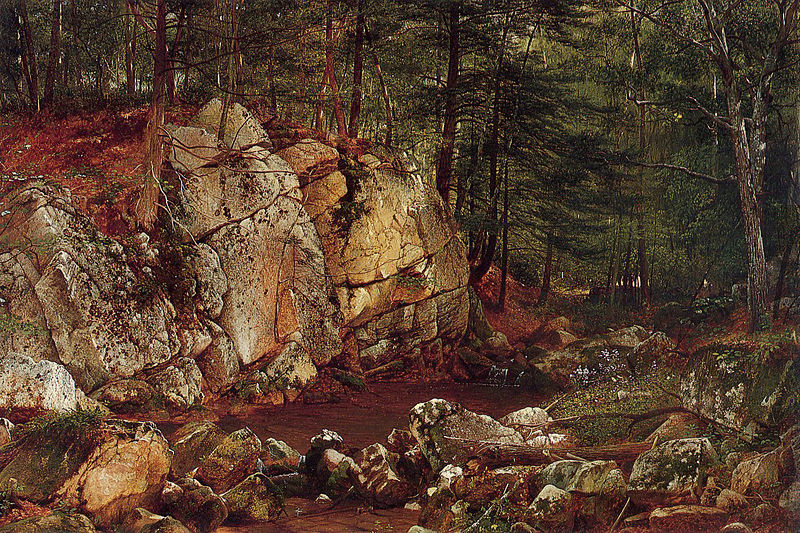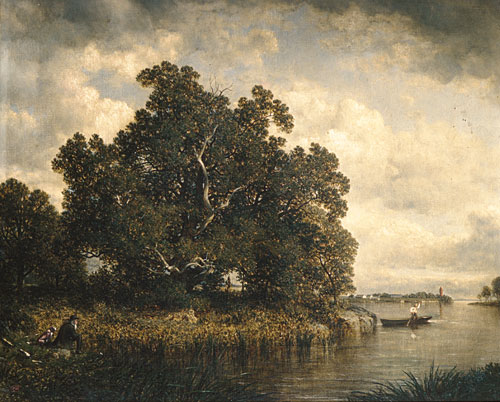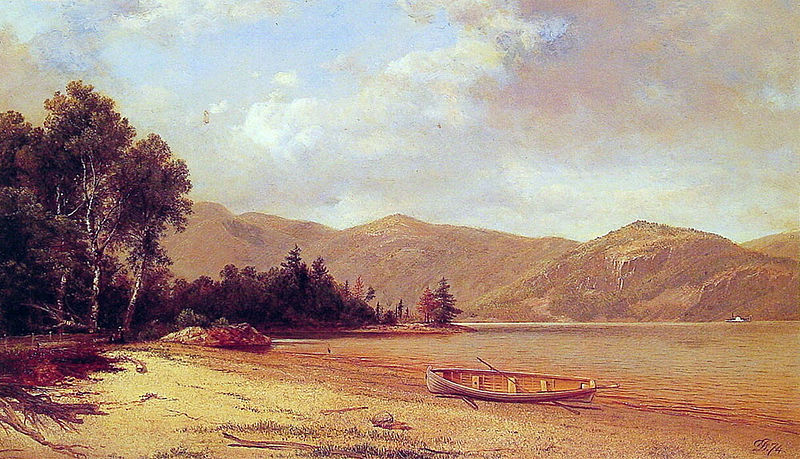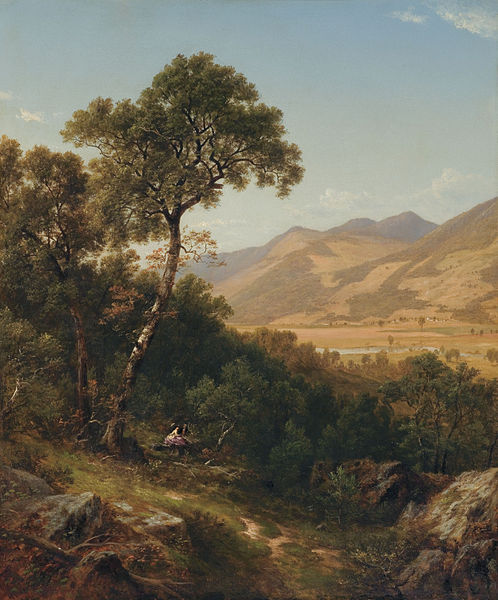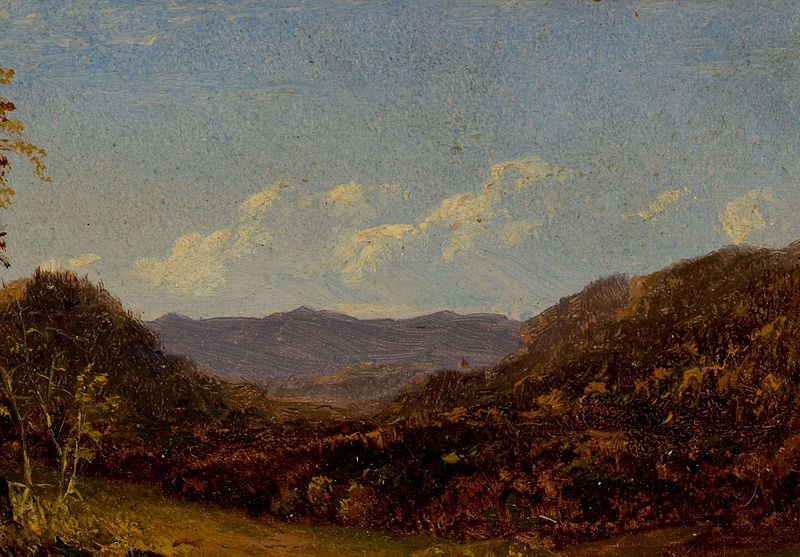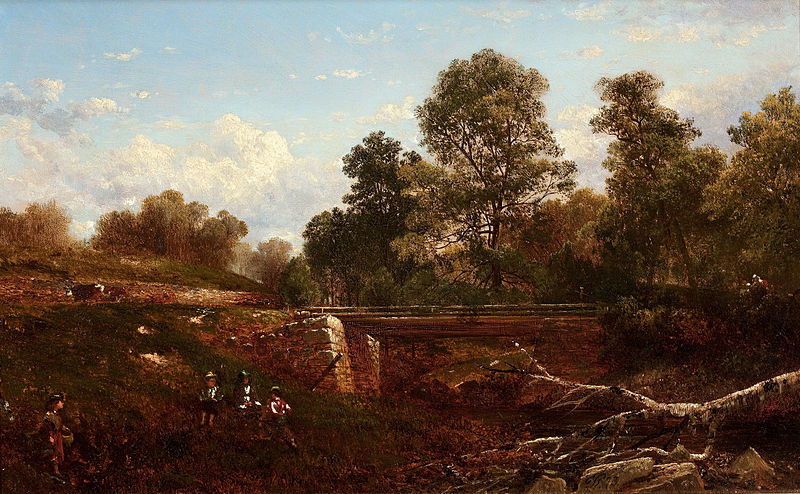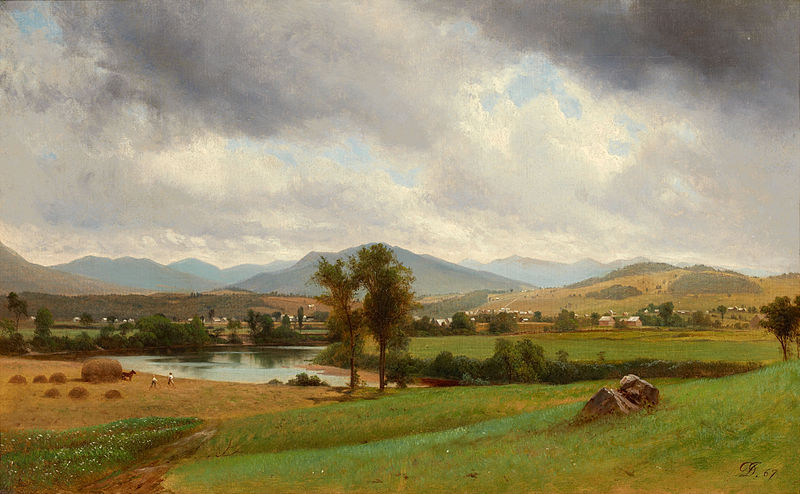<Back to Index>
- Painter Jasper Francis Cropsey, 1823
- Painter David Johnson, 1827
PAGE SPONSOR
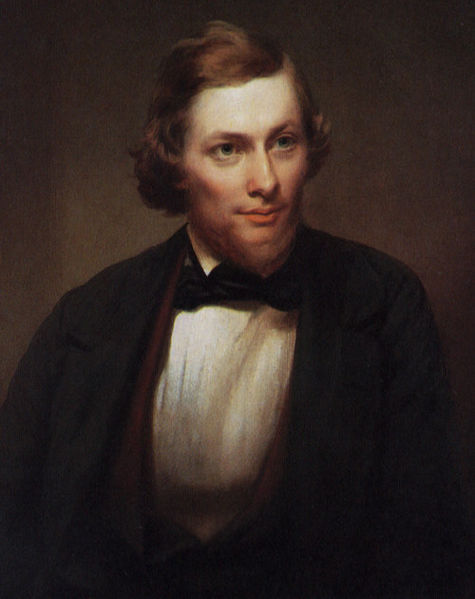
Jasper Francis Cropsey (February 18, 1823 - June 22, 1900) was an important American landscape artist of the Hudson River School.
Cropsey was born on his father Jacob Rezeau Cropsey's farm in Rossville on Staten Island, New York, the oldest of eight children. As a young boy, Cropsey had recurring periods of poor health. While absent from school, Cropsey taught himself to draw. His early drawings included architectural sketches and landscapes drawn on notepads and in the margins of his schoolbooks.
Trained as an architect, he set up his own office in 1843. Cropsey studied watercolor and life drawing at the National Academy of Design under the instruction of Edward Maury and first exhibited there in 1844. A year later he was elected an associate member and turned exclusively to landscape painting; shortly after he was featured in an exhibition entitled "Italian Compositions."
Cropsey married Maria Cooley in May 1847, traveled in Europe from 1847 - 1849, visiting England, France, Switzerland and Italy. He was elected a full member of the Academy in 1851. Cropsey was a personal friend of Henry Tappan, the president of the University of Michigan from 1852 to 1863. At Tappan's invitation, he traveled to Ann Arbor in 1855 and produced two paintings, one of the Detroit Observatory, and a landscape of the campus. He went abroad again in 1855, and resided seven years in London, sending his pictures to the Royal Academy and to the International exhibition of 1862.
Returning home, he opened a studio in New York and specialized in autumnal landscape paintings of the northeastern United States, often idealized and with vivid colors. Cropsey co-founded, with ten fellow artists, the American Society of Painters in Water Colors in 1866. He resided in the City until 1885, when he removed to Hastings - on - Hudson.
Cropsey's home and studio, Ever Rest, in Hastings - on - Hudson, New York as well as the largest permanent collection of Cropsey's work are open for tours by the Newington - Cropsey Foundation.
Jasper Cropsey died in anonymity but was rediscovered by galleries and collectors in the 1960s. Today, Cropsey's paintings are found in most major American museums, including the National Gallery of Art, the Metropolitan Museum of Art, the Los Angeles County Museum of Art, the Detroit Institute of Arts, the Timken Museum of Art in San Diego, the Honolulu Museum of Art, the Fine Arts Museums of San Francisco, the Denver Art Museum, the Princeton University Art Museum and the Museum of Fine Arts, Boston. Works by Cropsey also hang in the White House.
Cropsey and his wife Maria are buried in Sleepy Hollow Cemetery in Sleepy Hollow, New York.
Cropsey's interest in architecture continued throughout his life and was a strong influence in his painting, most evident in his precise arrangement and outline of forms. But Cropsey was best known for his lavish use of color and, as a first generation member from the Hudson River School, painted autumn landscapes that startled viewers with their boldness and brilliance. As an artist, he believed landscapes were the highest art form and that nature was a direct manifestation of God. He also felt a patriotic affiliation with nature and saw his paintings as depicting the rugged and unspoiled qualities of America.
Some of his works include "Jedburgh Abbey"; "Pontaine Marshes" (1847); "Backwoods of America" (1857); "Richmond Hill" (1862); "Indian Summer" (1866); "Greenwood Lake" (1870); "Lake Nemi in Italy" (1879); "Old Church at Arreton, Isle of Wight" (1880); "Ramapo Valley" (1881); "Autumn on the Hudson" (1882; however, the New York Daily Tribune refers to a painting by Cropsey called "Autumn on the Hudson" in its morning edition of Jan. 7, 1861): "Wawayanda Valley" (1883); "Spring-time in England" (1884); "October in Ramapo Valley" (1885); "Autumn on Lake George" and "A Showery Day" (1886).
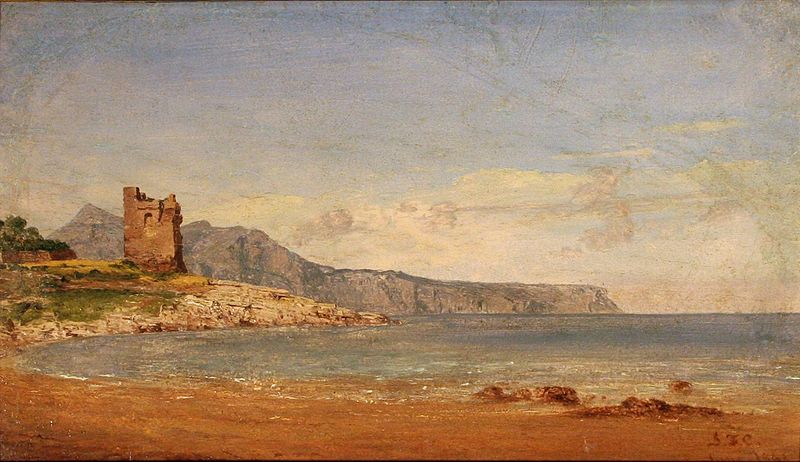
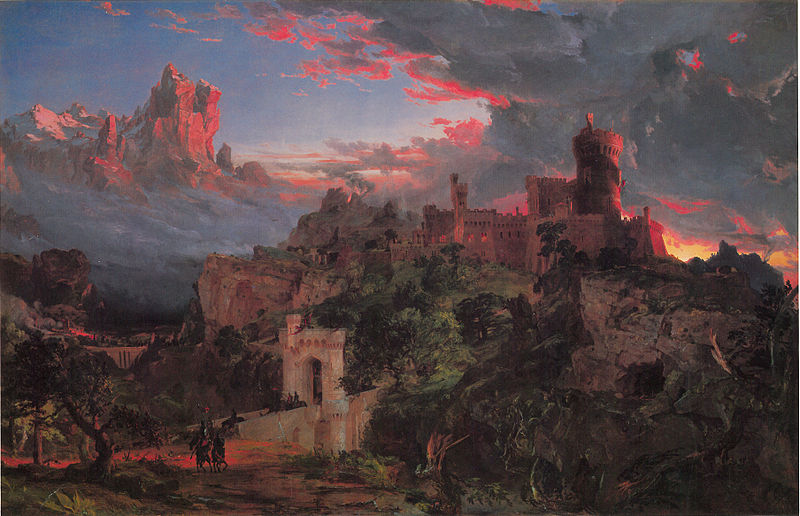
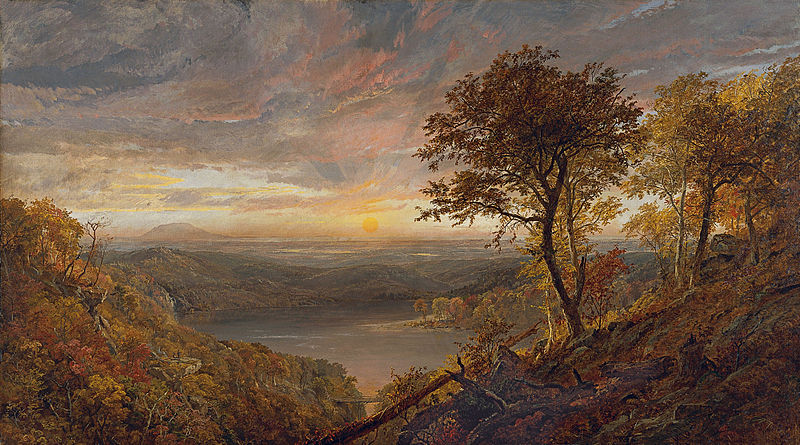
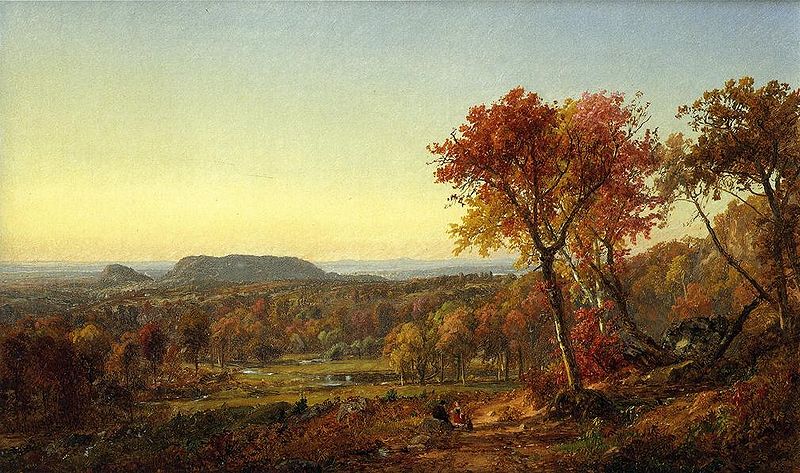
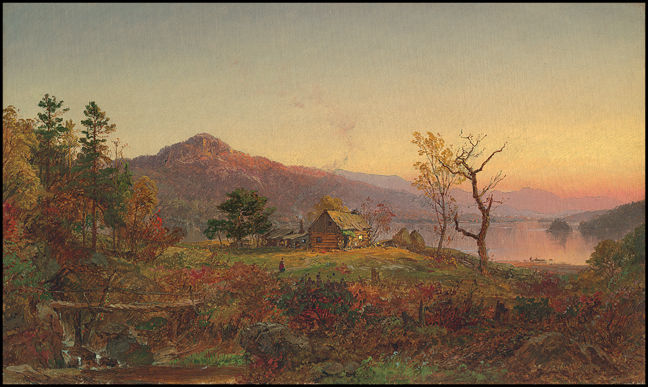
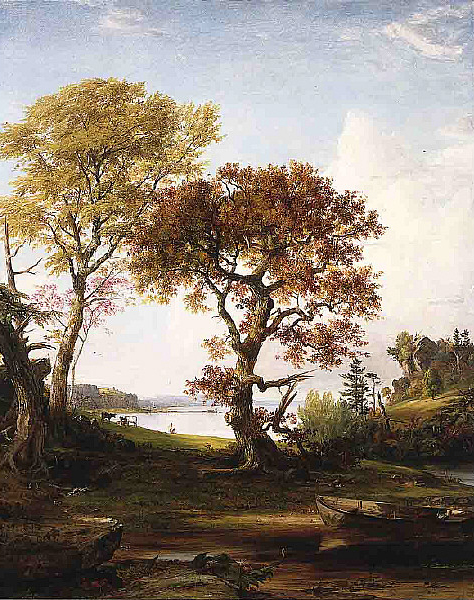
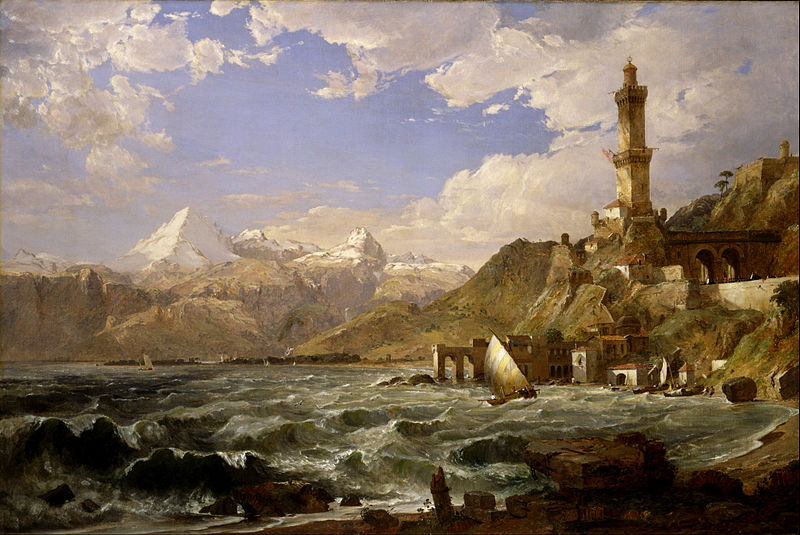
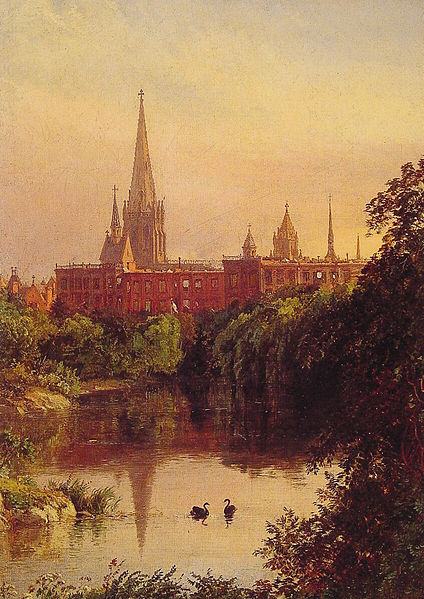
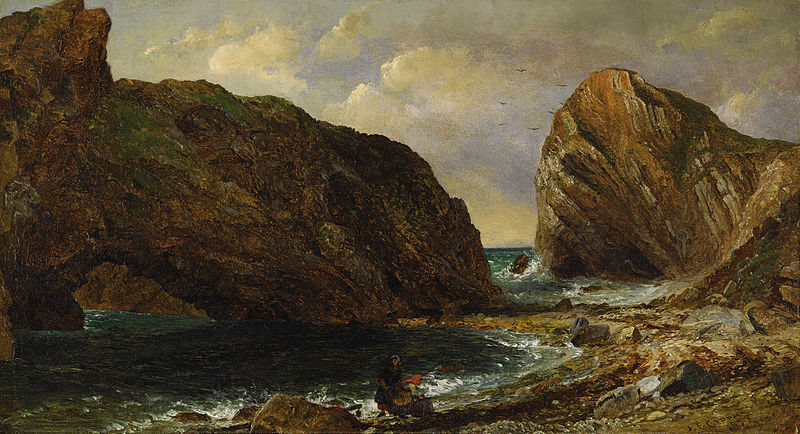
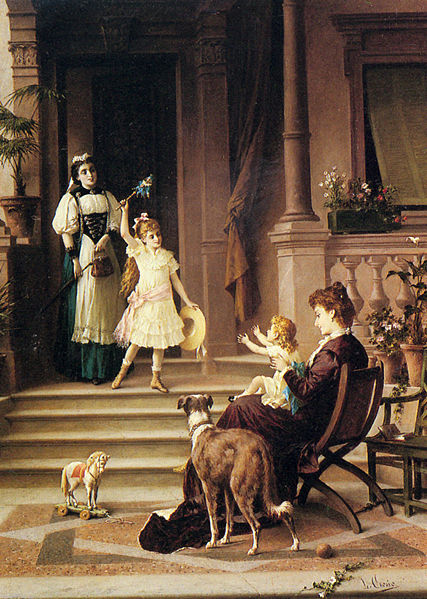
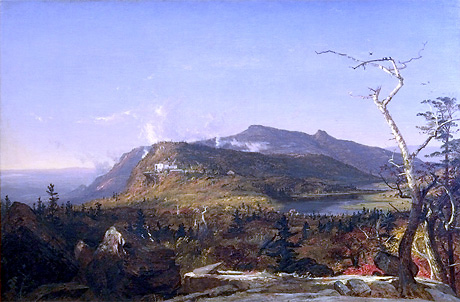
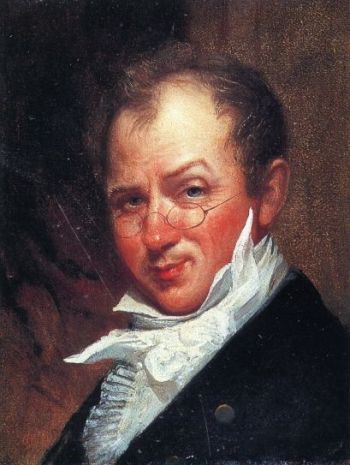
David Johnson (May 10, 1827 - January 30, 1908) was an American painter, a member of the second generation of Hudson River School painters.
Johnson was born in New York City, New York. He studied for two years at the antique school of the National Academy of Design and also studied briefly with the Hudson River artist Jasper Francis Cropsey. Along with John Frederick Kensett and John William Casilear, he was best known for the development of Luminism.
On the back of a painting made at Haines Falls, Kauterskill Clove, in 1849, Johnson wrote "My first study from nature. Made in company with J.F. Kensett, and J.W. Casilear,". By 1850, Johnson was exhibiting regularly at the National Academy of Design in New York, where he became an associate in 1859; in 1861 he was elected a full Academician.
Johnson's signature works are usually small in format, tightly painted, delicately handled and richly colored Based on copious preliminary drawings and studies of specific trees in their natural environment, his paintings are accurate and inviting representations of Northeastern scenery and 'exquisite examples of the style that is now called Luminism.' Johnson painted numerous Lake George scenes between the late 1860s and early 1870s, including View of Dresden, Lake George.
Johnson's greatest success was achieved during the mid 1870s, when he exhibited paintings of such popular landscape locales as the Catskills, Lake George and the White Mountains, as well as pastoral scenes of central New York state, an area which he was the only important artist of the era to frequent. He exhibited extensively in major American art centers, including Chicago, Boston and Philadelphia, and at the Paris Salon of 1877. Subsequently his work changed to reflect the influence of the French Barbizon school, a stylistic transition that met with harsh critical reception from his colleagues, but which paralleled the dilemma faced by Hudson River school painters seeking to stay relevant as aesthetic tastes changed. Bayside, New Rochelle, New York is an example of Johnson's later work, when the Barbizon influence eclipsed his earlier debt to the Hudson River school.
Johnson died at his home in Walden, New York on January 30, 1908.
